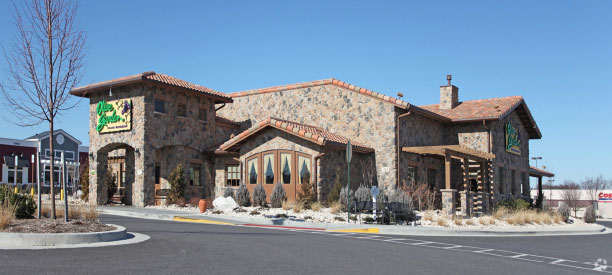Valuation of Net Leased Properties

“The lease rate for these properties is not related to the market or based on an analysis of comparable leased properties within the market area; the lease rate is strictly based on a financing arrangement to cover cost plus profit"
The Leased Fee value is very commonly required for franchise occupied restaurants that are subject to long-term leases and frequently purchased by high net worth individuals and institutional investors as investment properties.
What is often unique about these types of leased fee assets are that they are commonly created to serve as financing tools by the tenants. Known as Build-To-Suit’s and Sale-Leasebacks these financial transactions typically enable companies to access more capital than traditional financing methods. For example, sale leasebacks allow companies to receive 100% of the value created by a lease, in contrast to traditional financing which is limited by loan to value and debt coverage ratios. These financing instruments also effectively allow these companies to grow by improving their balance sheets and redeploying invested capital in real estate into business expansion efforts.
For the seller, the above benefits are reason enough to prefer this financing tool over traditional bank loans. However, in addition, the Single Tenant Net Leased (STNL) market has emerged over the past 10-20 years from a small fraction of total commercial real estate transactions to a $50+ Billion per year industry. The investor benefits of long-term leases to corporate tenants with excellent credit ratings, with virtually no management headaches and fair returns, coupled with a low-interest rate environment over the past decade that keeps bond yields at very low levels, has resulted in extraordinary demand by investors for these properties.
With this backdrop, developers have benefited greatly by working with retailers on build-to-suit arrangements. Corporate tenants enter into agreements with developers to construct their buildings all over the country.
However, their building designs in many cases are focused on branding and serving their specific needs, rather than on the resale value or marketability of the building in the future to an alternate user. Therefore, the value of the buildings on the open market to an alternate user is frequently much less than its cost to build.
Further, the developer’s custom fit the space out for the specific tenant. This includes all of the equipment and furniture with a relatively short economic life. Thus, many costs that would otherwise be sunk costs for the tenant in opening up a business in the new location are effectively financed on a long-term basis by structing the lease as a function of the developers cost plus profit.
As a result of these considerations, the lease rate for these properties is not related to the market or based on an analysis of comparable leased properties within the market area; the lease rate is strictly based on a financing arrangement to cover cost plus profit.
The combined effect of extraordinary market demand for long-term leased properties to corporate high credit tenants, which already results in significant premiums being paid for these properties, coupled with the lease rates of these properties being inflated by components that do not relate to real estate value, results in values and lease rates that are inconsistent with the value premise of fee simple real estate.